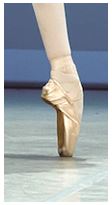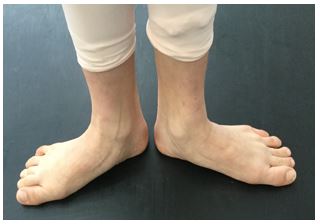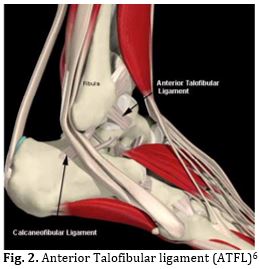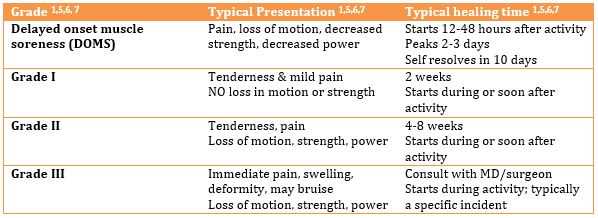Blog
Blog
31st Annual Conference Special Interest Group (SIG) Day: A Day for Physicians
Author: Carolyn Keeler on behalf of the IADMS Medical Committee
One of our Special Interest Group (SIG) days this year is: A Day for Physicians organized by the IADMS Medical Committee. 24th October 2021 - 8am-5pm (MST)
Here, the Medical Committee introduce the expert lineup of Dance Medicine specialists and dynamic speakers who will impart their unique areas of knowledge and experience upon attendees. This day will be of value to medical and surgical specialists, along with other healthcare providers who share a passion in the care of dancers.
Read ArticleGetting Jiggy with It
Author: Roisin Cahalan on behalf of the Dance Educators’ Committee
...In recent decades, the complexity and physical demands of Irish dancing have increased exponentially, as has the incidence of injury in the genre. At the elite level, it is comparable to that experienced by peers from contemporary dance1 and ballet fields2. Despite the unique choreographic features of Irish dancing, not least the upright torso and stationary arms, and the requirement to land on the toes with minimal knee bend, there are many similarities between the risks and injury profiles of elite Irish dancers and peers from other genres1,3.
Read ArticleDoes dancing in heels hurt your knees? This may be why.
Author: Pamela Mikkelsen on behalf of the IADMS Promotion Committee
Dancers know that the shoes we wear impact how our bodies feel after dancing. I know that dancing full production shows in heels left my knees sore in ways that wearing flat shoes didn’t. Some of this soreness can be explained by differences in choreography demands but how much of the soreness could come down to the shoes?
Read ArticleNot “IF” but “WHEN”: Rehearsing for medical emergencies in dance
Author: Carina M. Nasrallah
Catastrophic injuries and life-threatening medical emergencies are not common in the dance studio or theater. Ankle sprains, bruised toenails and sore backs are more the “bread and butter” of dancers’ woes, and as a result it is easy to develop a false sense of security - the mentality that “it would never happen to us”. But it is critical to remember that dancers are elite athletes and not immune to catastrophic injury. Therefore, having a plan for handling emergency situations is not a recommendation - it is necessity.
Read ArticleStretching the Point: Part 2
Authors: Gabrielle Davidson and Maggie Lorraine on behalf of the IADMS Education Committee
In Part 1 of “Stretching the Pointe” we discussed some issues that may arise as a result of incorrect use of the foot and faulty foot alignment in training. Anatomical information about the foot is available in previous blog posts. In discussing the foot and the dancer, there are a few specific injuries and conditions that need to be taken into account to further strengthen the argument for ensuring correct alignment and muscle activation when teaching young dancers how to pointe their feet.
Read ArticleFoot Injuries in Dancers. Are they preventable?
Author: Maggie Lorraine on behalf of the IADMS Education Committee
Perfecting the art of dance requires long hours of intensive training over many years with constant repetitions of exercises to refine and perfect the execution of sequences and movements. Dance places high demands on the body and for this reason professional dance training institutions often include physique testing, conducted by the resident physiotherapist as part of the audition process. Subsequently even the physiques that are deemed “ideal” for training at a pre professional level are at risk of injury as a result of faulty alignment and technique. In recent years the quest for greater virtuosity in performance has added an extra layer of risk to the aspiring young dancer who is hoping to achieve a career in dance. Issues such as more intrusive stretching techniques to achieve higher extensions of the leg, bigger and higher jumps with added complexity, more virtuosic turns and particularly greater engagement of the spine in movement. These trends have all added to the necessity for dance teachers to have a comprehensive knowledge of human anatomy, physiology and kinesiology. This knowledge will give teachers the information to guide their students to reach their full potential and to avoid sustaining injuries.
Read ArticleCaring for bony injury demystified!
Author: Meredith Butulis
Welcome to Part Three of our three part series on muscle, ligament, and bone injuries. We will explore some common myths and how you can use current evidence to efficiently return to optimal performance. This month we will explore bony injuries.
Read ArticleCaring for ligament sprains demystified!
Author: Meredith Butulis
Welcome to Part Two of our three part series on muscle, ligament, and bone injuries. We will explore some common myths and how you can use current evidence to efficiently return to optimal performance. This month we will explore ligamentous injuries.
Read ArticleCaring for muscle strains demystified!
Author: Meredith Butulis
Welcome to our three part series on muscle, ligament, and bone injuries. We will explore some common myths, and how you can use current evidence to efficiently return to performance. This month, we will begin with muscular injuries.
Read ArticleA Young Dancer's Guide: What every young dancer needs to know about injury prevention and rehabilitation: Video from the 2014 Annual Meeting
Presented by Bobby Bernstein
Dance today is an athletically strenuous art form and many young dancers suffer from injuries. My co-author, Nancy Kadel, MD, and I have many insights into why these injuries commonly occur and how they can be prevented. The focus of this blog is on cross training for young dancers, one of the most important topics we discuss in “A Young Dancer's Guide: What every young dancer needs to know about injury prevention and rehabilitation”.
Read Article








